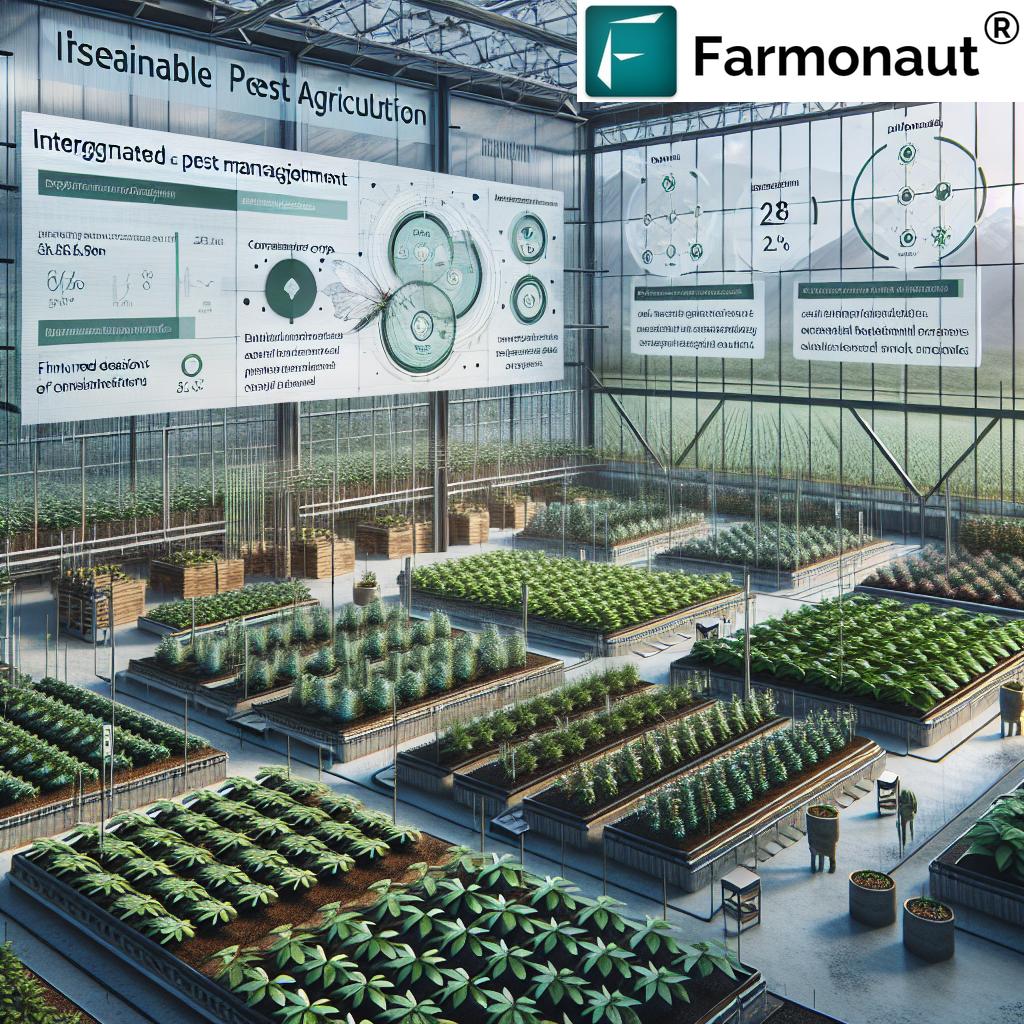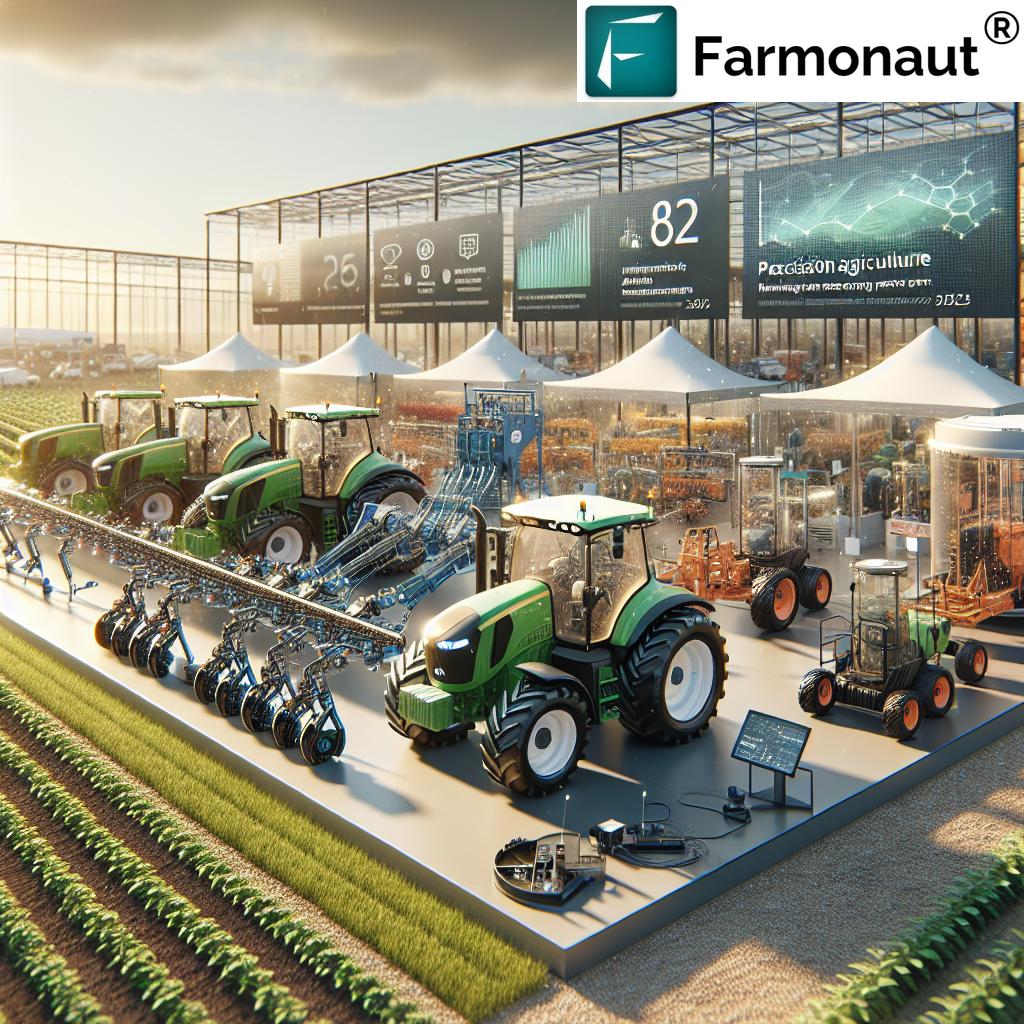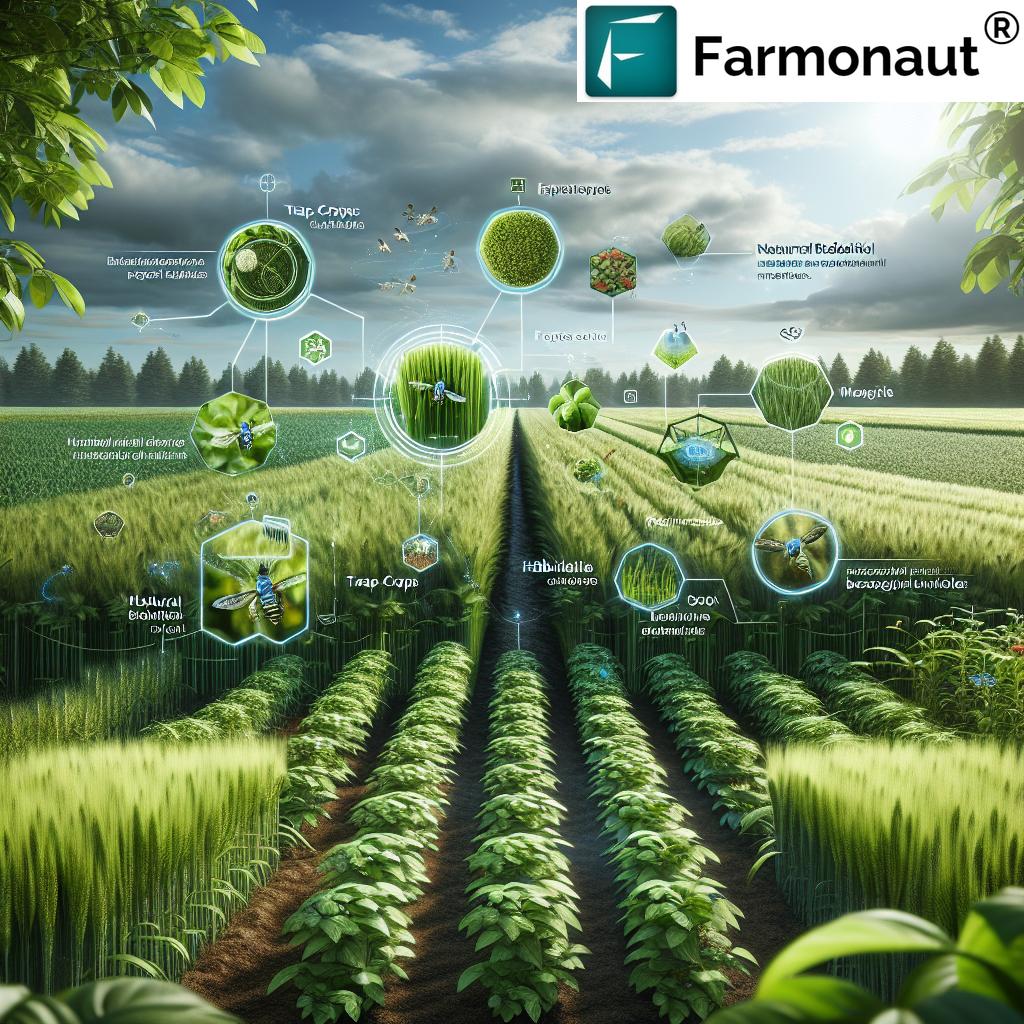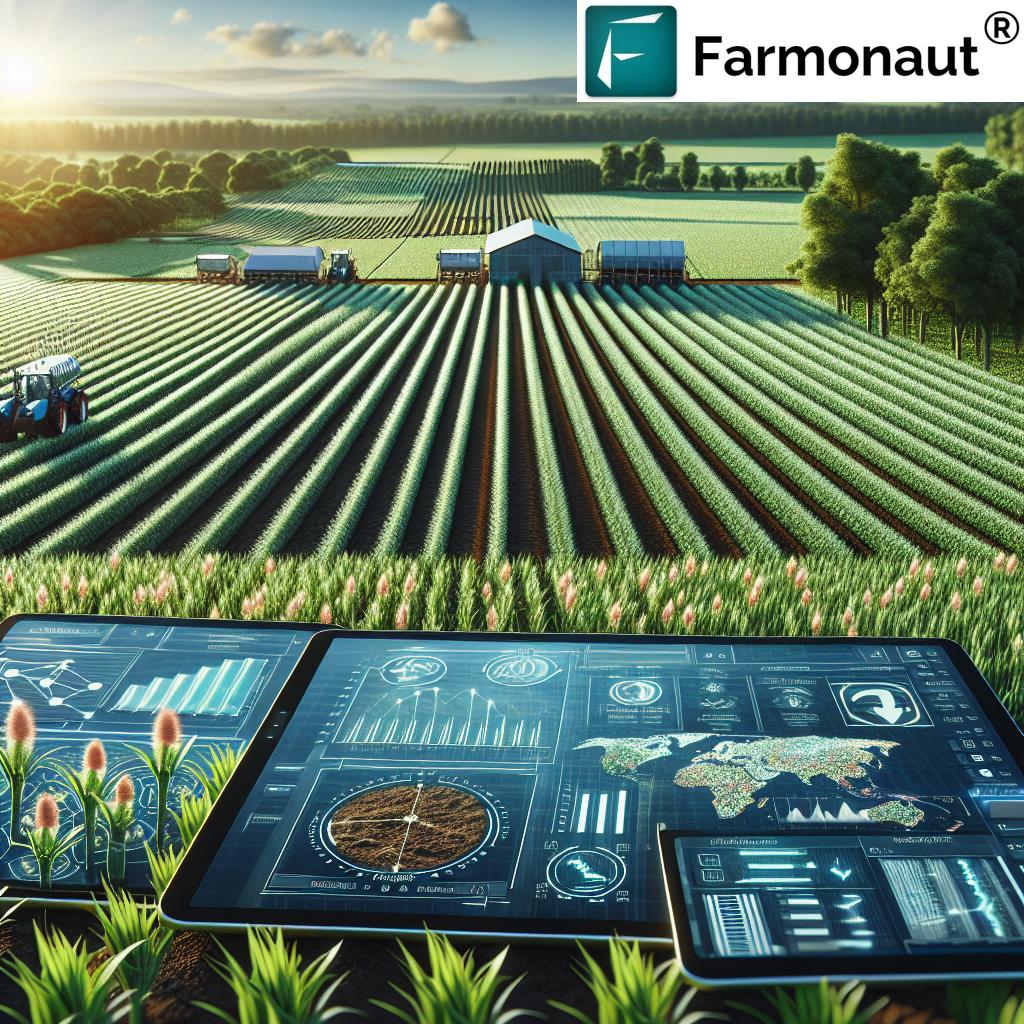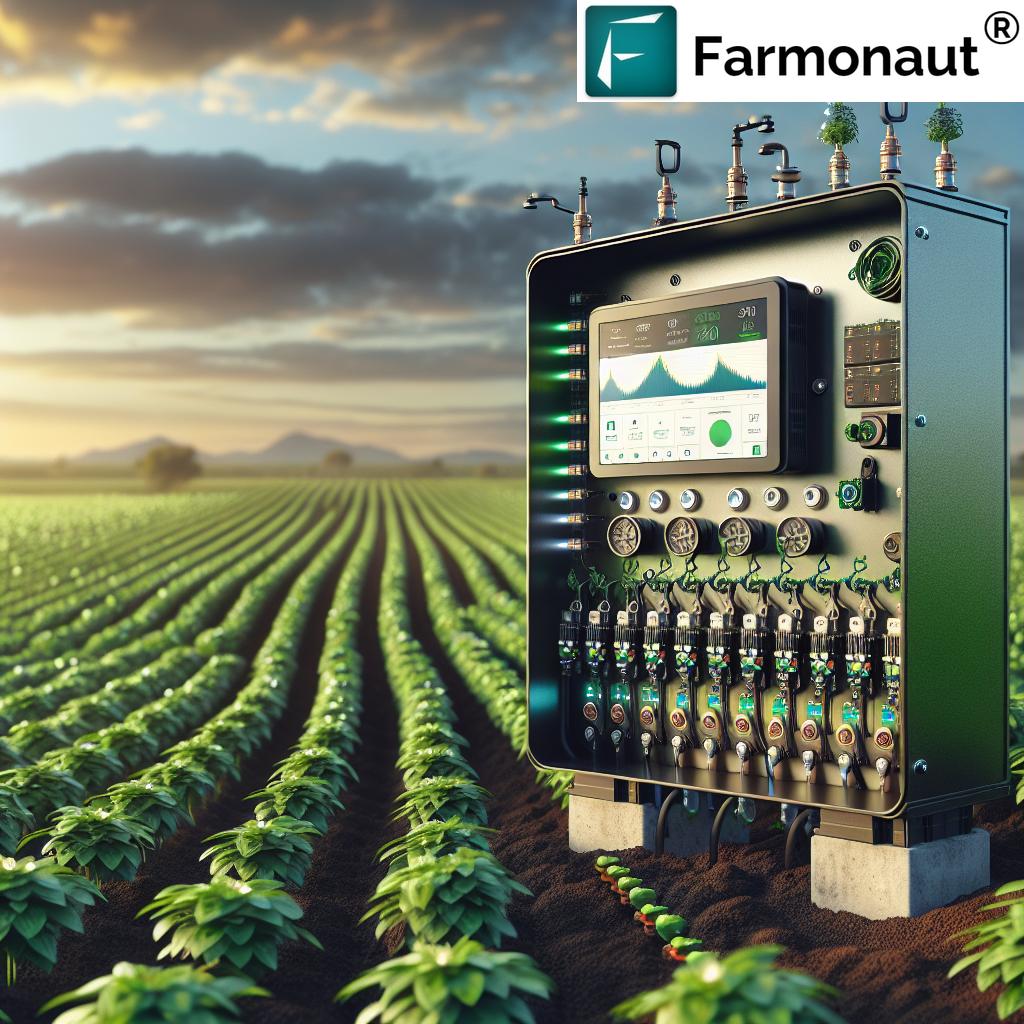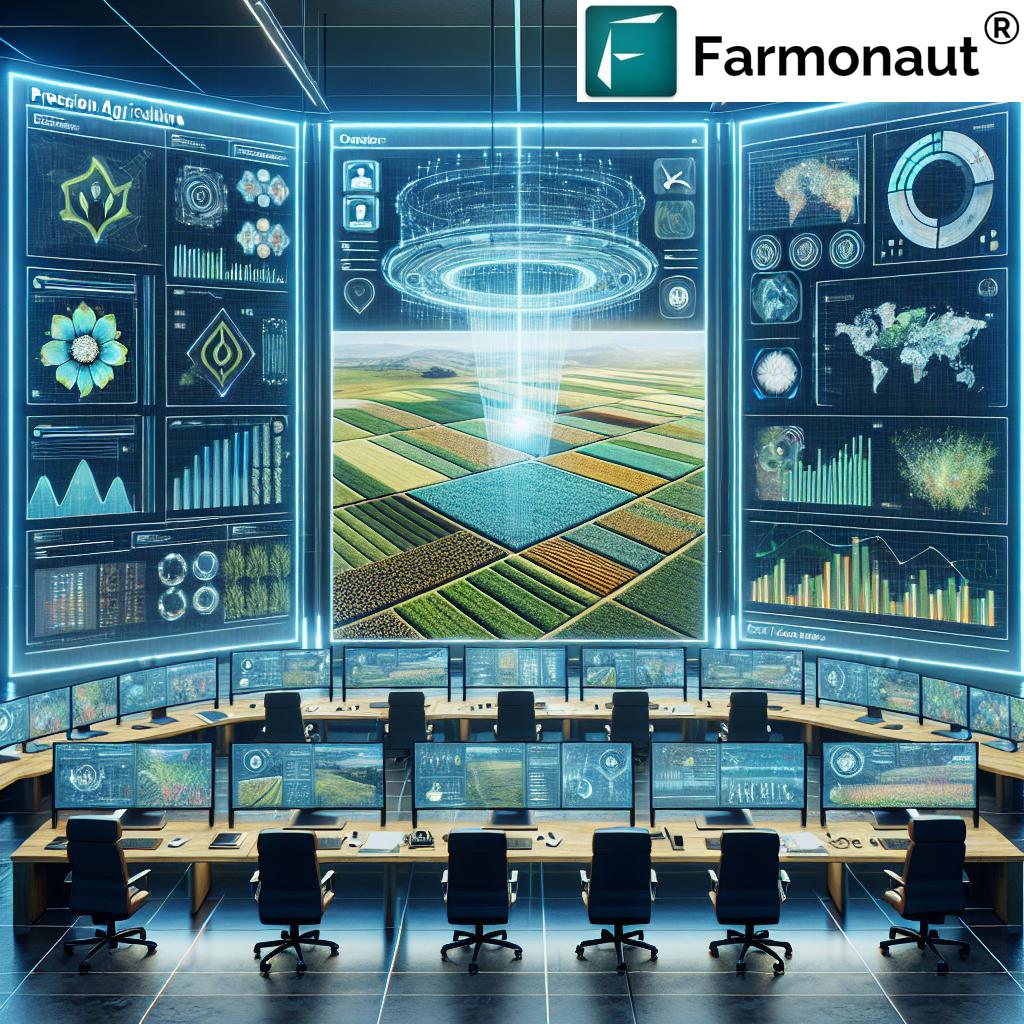Table of Contents
- Introduction
- Greenhouse Crop Yield Trivia
- 1. Environmental Control: Mastering Optimal Plant Growth Conditions
- 2. Advanced Greenhouse Technologies & Automation
- 3. Efficient Greenhouse Resource Management
- 4. Sustainable Greenhouse Practices
- 5. Data-Driven Agriculture: Analytics & Smart Decisions
- 6. Staff Training, Education, and Continuous Learning
- Comparison Table: Greenhouse Innovations & Sustainability Impact
- Farmonaut: Transforming Modern Agriculture
- Frequently Asked Questions (FAQ)
- Conclusion
“Greenhouse crop yields can increase by up to 30% with advanced environmental control systems.”
Agriculture Innovations: 7 Genius Greenhouse Hacks!
As our global population surges and the demand for food reaches new heights, greenhouse crop yield optimization stands as a pivotal challenge and opportunity for sustainable agriculture. Greenhouses provide highly controlled environments that empower us to transcend the limitations of seasons, climates, and pests—offering an arena where environmental control, advanced greenhouse technologies, and data-driven decision making can flourish.
In this comprehensive blog, we’ll uncover seven genius hacks for enhancing yields in greenhouse systems. From precision environmental control systems and efficient resource management to sustainable greenhouse practices and continuous staff training, these innovations propel us toward higher productivity, reduced waste, and improved environmental stewardship.
1. Environmental Control: Mastering Optimal Plant Growth Conditions
At the heart of thriving greenhouse crop yield is precise environmental control. Unlike open-field farming, greenhouses allow us to minimize environmental variability, creating optimal plant growth conditions season after season. Let’s examine the three crucial pillars:
Temperature Management
- Key Target: Most vegetables and fruits in greenhouses thrive at 70–85°F (21–29°C) by day; during the night, cooler temperatures promote healthy metabolic activity and reduce plant stress.
- Hacks:
- Installing thermostats and automated systems ensures temperatures remain within the optimal range 24/7.
- Automated ventilation and heating units swiftly react to external climate fluctuations, maintaining consistent conditions for growth.
- Check out modern temperature regulation tips for high greenhouse yields.
Humidity Control
- Why it Matters: Excessive humidity cultivates fungal diseases; low humidity stresses plants, reducing photosynthesis and yield.
- Tools:
- Hygrometers (humidity sensors) paired with ventilation systems deliver balanced humidity levels for promoting plant health.
- Automated fogging or dehumidification units provide fine control by adjusting mist or removing moisture.
- Read more on maintaining balanced greenhouse humidity for higher yields.
Light Management
- Essence: Light intensity and duration directly control photosynthesis and yield.
- Light Hacks:
- Shading systems (retractable shades, paints) minimize excess heat and UV damage during peak sunlight hours.
- Supplemental lighting (LED or HPS grow lights) ensures adequate light on shorter days or in regions with limited sunlight.
- The ideal protocol: Use timers and light sensors to automate adjustment of artificial lighting, simulating a natural day-night cycle for plants.
- Discover examples and best practices for greenhouse light optimization.
2. Advanced Greenhouse Technologies & Automation
Technologies are reshaping greenhouse operations at a breakneck pace. With advanced greenhouse technologies, we integrate environmental control systems, optimize resource management, and foster significant yield increases. Here’s how:
Automated Control Systems
- Sensors monitor temperature, humidity, CO2, soil moisture—delivering a continuous stream of data to central dashboards or mobile platforms.
- Actuators (for fans, heaters, lights, irrigation) respond instantly, ensuring optimal plant growth conditions at all times via automated greenhouse monitoring systems.
- Check how greenhouse automation improves crop yield and quality.
Internet of Things (IoT) Integration
- IoT devices link multiple sensors and controllers into a unified system, enabling 24/7 monitoring and remote management.
- IoT-powered data analysis uncovers growth patterns, prevents issues, and enables us to predict needs—delivering efficient resource utilization and higher quality crops.
- Explore advanced IoT applications in greenhouse crop management.
Smart Agriculture Solutions & Platforms
- Platforms like iGrow leverage machine learning and Markov decision processes to autonomously control greenhouses, boosting profits and sustainability. Read more about dynamic optimization strategies.
- Farmonaut’s crop health monitoring tools integrate satellite imagery, AI, and real-time alerts for tailored crop interventions and higher yields.
- Its Jeevn AI Advisory delivers actionable insights, weather forecasts, and schedules that help optimize irrigation, fertigation, and pest management in greenhouses.
-
Try the Farmonaut App for real-time, site-specific crop health monitoring and optimize every phase of your greenhouse operation!
Get started with Farmonaut Web and Mobile App
3. Efficient Greenhouse Resource Management
Greenhouse resource management is critical for sustainable productivity and reducing operational costs. Efficient use of water, fertilizer, and energy drives profit and reduces waste, benefiting farmers and the environment.
Efficient Irrigation and Fertigation
- Drip irrigation systems deliver water right where it’s needed—roots—thereby minimizing evaporation and runoff.
- Fertigation (delivering liquid fertilizers through irrigation) provides precise, real-time nutrient delivery. This leads to robust plant health, faster growth, and increased yield.
- Unlock even more benefits by integrating Farmonaut’s resource management tools, tracking soil moisture and crop health via satellite for better irrigation decisions and carbon footprint reduction.
- Explore more about efficient irrigation and fertigation for higher productivity.
Integrated Nutrient Management (INM)
- INM combines organic and inorganic fertilizers—bolstering soil health and crop productivity.
- This hybrid approach:
- Provides continuous nutrient supply, supporting optimal plant growth.
- Reduces chemical runoff and minimizes greenhouse gas emissions—vital for environmental sustainability.
- Learn how INM improves crop yield and sustainability.
Crop Rotation and Cover Cropping
- Rotate crops to prevent soil depletion and reduce the build-up of pests and diseases.
- Intersperse cover crops—like hairy vetch—to fix atmospheric nitrogen, improve soil structure, and increase biodiversity in your greenhouse.
- Dive into methods that enhance greenhouse soil through crop rotation.
Farmonaut Fleet Management
-
For large-scale operations, efficient vehicle usage in and around greenhouses is critical.
With Farmonaut Fleet Management, agribusinesses can: - Track, optimize, and schedule agricultural machinery
- Reduce operational costs by minimizing downtime and improving vehicle health
- Enhance safety and resource allocation
“Sustainable greenhouse practices can reduce water usage by nearly 50% compared to traditional open-field farming.”
4. Sustainable Greenhouse Practices
Sustainability is no longer optional; it’s a necessity to preserve our resources and ensure long-term productivity and quality of greenhouse crops. Here are key strategies:
Integrated Pest Management in Greenhouses (IPM)
- IPM combines biological (predatory insects, microbes), mechanical (sticky traps, crop covers), and chemical (minimal, targeted pesticide sprays) methods.
- This approach reduces chemical dependency and improves greenhouse environment for plant health and yield.
- Read about top strategies for pest management in commercial greenhouses.
Pruning and Training Techniques
- Effective pruning, trellising, and installing stakes ensure better air circulation and light penetration throughout the crop canopy.
- Pruning removes dead or diseased plant material, preventing the spread of pathogens and improving yield potential.
- See best practices in greenhouse crop training.
Energy Efficiency and Renewable Integration
- Energy-efficient lighting and heating: Choose LED grow lights, double-glazed panels, and high-efficiency boilers to cut costs and emissions.
- Renewable energy (solar, geothermal): Integration reduces the carbon footprint and supports sustainable greenhouse practices.
Want to monitor and improve your greenhouse’s carbon profile? Check out Farmonaut Carbon Footprinting for real-time data on agricultural emissions and actionable recommendations.
Farmonaut Product Traceability and Transparency
- Today’s market requires us to demonstrate product authenticity. Farmonaut’s Traceability Platform uses blockchain for fully transparent greenhouse supply chains, providing certainty from seed to store and building consumer trust while reducing fraud risks.
5. Data-Driven Agriculture: Analytics & Smart Decisions for Yield
Harnessing data analytics and machine learning is at the forefront of boosting greenhouse yields and resource efficiency. Data-driven agriculture delivers these innovations:
- Real-Time Monitoring: Continuous streams of sensor data (temperature, humidity, soil moisture, plant health, growth stage) help identify, predict, and respond to issues early, minimizing losses.
- Predictive Analytics: Machine learning algorithms tap historical trends to forecast pests, diseases, and potential yield. This supports more efficient resource management and contingency planning.
- Performance Metrics: Clear, actionable KPIs (yield/plant, water efficiency, disease incidence) allow us to evaluate performance, refine strategies, and report on sustainability progress.
For advanced satellite-powered analytics on your greenhouse operations, visit the Farmonaut Large Scale Farm Management solution. - For developers and agri-businesses: access robust APIs for satellite crop and weather data (API Explorer, API Developer Docs).
6. Staff Training, Sustainable Education, and Continuous Learning
Investing in our team is as important as investing in technology. Well-trained staff maximize technology adoption, foster sustainable practices, and drive continuous improvement.
- Technical Training: Equip staff to configure and maintain automated monitoring and control systems, interpret agri-sensor data, and implement timely system adjustments.
- Education in Sustainable Practices: Teaching the principles of water and energy conservation, integrated pest management in greenhouses, and soil health ensures the adoption of efficient, sustainable protocols.
- Continuous Learning: Encourage staff to stay informed on the latest tools, analytics, and research—fostering a culture of adaptable, resilient, and innovative greenhouse management.
Comparison Table of Greenhouse Innovations and Their Sustainability Impact
| Greenhouse Hack | Description | Estimated Yield Increase (%) | Environmental Benefit | Ease of Implementation | Sustainability Score (1–5) |
|---|---|---|---|---|---|
| Automated Environmental Control | Automated systems for temperature, humidity, and light management | 20–30% | Reduces energy and resource waste | Medium | 5 |
| IoT Monitoring & Smart Analytics | Sensor-driven continuous monitoring and predictive analytics | 15–25% | Minimizes water, fertilizer, and pesticide use | Medium | 5 |
| Efficient Irrigation & Fertigation | Drip irrigation combined with nutrient dosing | 10–20% | Reduces water & fertilizer wastage | Medium | 5 |
| Integrated Nutrient Management (INM) | Blending organic & inorganic fertilizers for nutrient cycling | 10–15% | Boosts soil health, reduces emissions | Easy | 4 |
| IPM (Integrated Pest Management) | Biological/mechanical/chemical pest control integration | 8–15% | Lowers chemical use | Medium | 5 |
| Pruning & Training Techniques | Strategic trimming, staking, trellising for airflow & light | 7–12% | Reduces disease incidence | Easy | 4 |
| Energy Efficiency & Renewables | LED lighting, solar energy, insulation upgrades | 5–10% | Reduces energy footprint | Medium | 5 |
Farmonaut: Transforming Modern Agriculture with Data and Technology
Farmonaut is a leading agricultural technology provider dedicated to making precision agriculture and data-driven insights accessible to farmers worldwide. Through satellite analytics, artificial intelligence, and blockchain traceability, Farmonaut boosts farm productivity, sustainability, and transparency. Our platform provides:
- Satellite-based crop health monitoring—delivering NDVI, soil moisture, and vegetation data to make informed irrigation, fertigation, and pest management decisions.
- Jeevn AI Advisory—personalized crop schedules, weather forecasts, and AI-driven recommendations for maximizing yield, tailored for all scales of farming.
- Resource & Fleet Management—tools for tracking agricultural machinery and optimizing logistics, essential for cost-effective greenhouse operations.
- Blockchain Product Traceability—provenance solutions that guarantee supply chain authenticity and foster consumer confidence and transparency.
- Carbon Footprint Tracking—tools to measure, manage, and reduce on-farm environmental impact for compliance and sustainability.
- APIs for satellite and weather data—empowering agribusinesses, developers, and research institutions to integrate comprehensive data within their own systems.
- Flexible subscription model: Affordable, scalable access for individual farmers, agribusinesses, and governments. See below:
Frequently Asked Questions (FAQ) about Greenhouse Innovations
What are the top factors that influence greenhouse crop yield?
- Environmental control (temperature, humidity, and light)
- Efficient irrigation and fertigation systems
- Integrated pest management (IPM)
- Effective use of advanced greenhouse technologies and IoT sensors
- Continuous monitoring, analytics, and staff training
How do automated greenhouse monitoring systems improve crop yields?
These systems use sensors, actuators, and real-time data to regulate and maintain optimal conditions (temperature, humidity, light), react instantly to changes, and minimize losses due to adverse or fluctuating environments. The result is healthier plants and higher, more consistent yields.
What is integrated pest management (IPM) in greenhouses?
IPM combines biological (natural predators), mechanical (physical barriers), and chemical (minimal synthetic pesticide) solutions to keep pests below damaging thresholds, reduce environmental impact, and lower chemical residues on produce.
How can data-driven agriculture help in greenhouse productivity?
Data-driven agriculture leverages continuous data streams from sensors and satellites to monitor, analyze, predict, and guide every operational aspect—improving decision-making, reducing resource wastage, and enabling rapid, targeted interventions for optimal plant growth.
What makes Farmonaut different for greenhouse growers?
- Affordability and accessibility (satellite-based, no costly hardware required)
- Precision analytics for irrigation, nutrient, and pest management
- Integration of AI, blockchain, and real-time advisory for informed decisions
- Comprehensive carbon footprint, fleet, and resource management—all in one platform
Where can I learn more about Farmonaut solutions?
Conclusion: Meeting the Global Food Demand with Sustainable Greenhouse Innovations
Enhancing greenhouse crop yields is more than a technical achievement—it’s an ecological imperative. Through environmental control systems, advanced technologies, efficient resource management, and systemic sustainable practices, we are well equipped to meet the rising global demand for food while protecting our natural resources.
With tools like automated greenhouse monitoring systems, data-driven agriculture, and Farmonaut’s suite of accessible analytics—every greenhouse can become a thriving, productive, and resilient operation. By maximizing plant health and productivity, reducing inputs, and preserving environmental quality, we lay the foundation for a new, sustainable era of agriculture.
Let’s cultivate the future—one genius hack at a time. For real-time analytics, AI advisory, carbon tracking, and transparent supply chains, download the Farmonaut App today.





